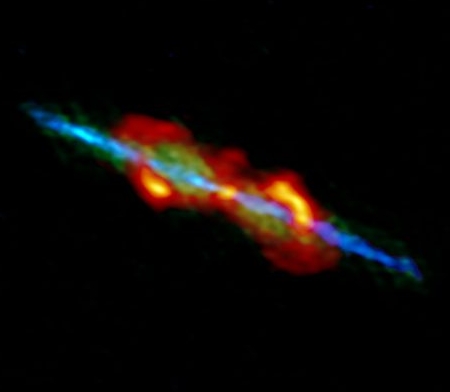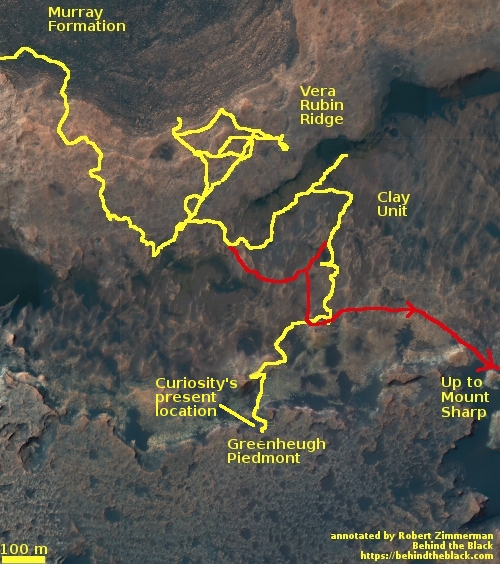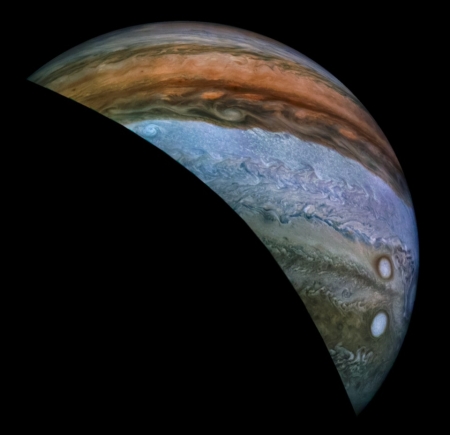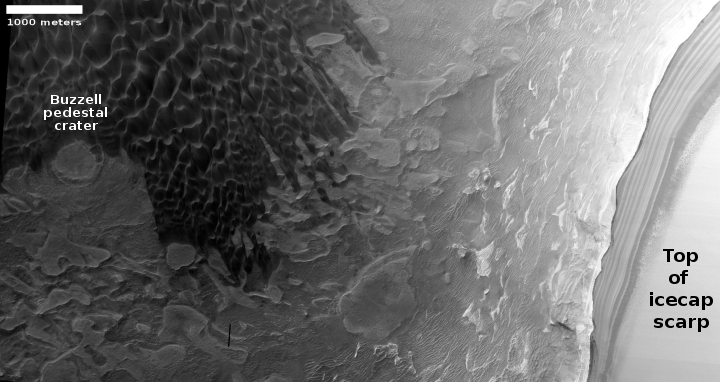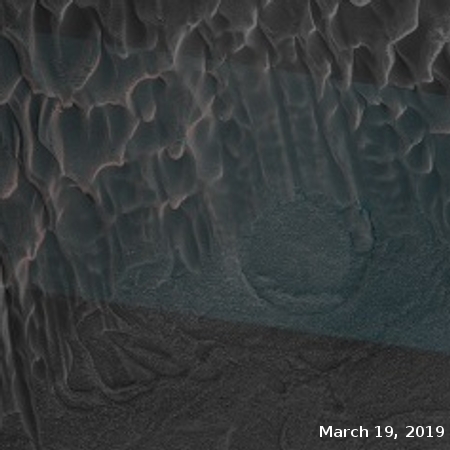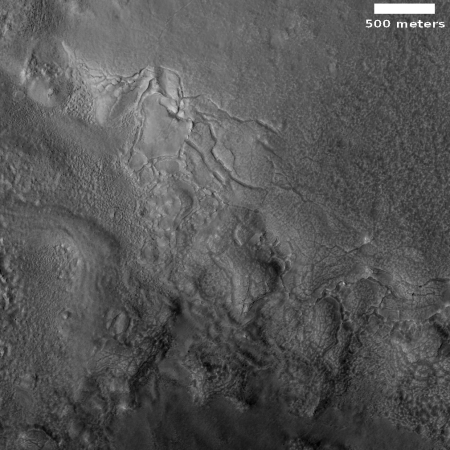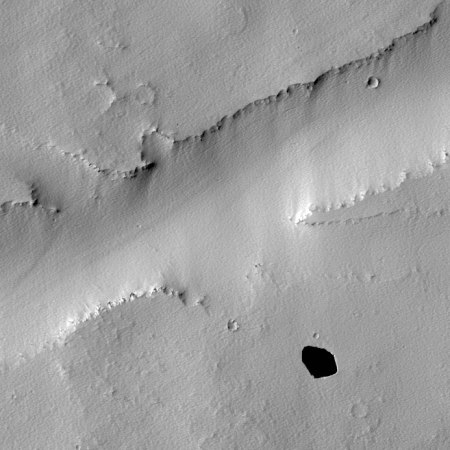OSIRIS-REx makes closest reconnaissance of Bennu yet
The spacecraft OSIRIS-REx yesterday made its closest reconnaissance yet of the asteroid Bennu, sweeping past its primary touch-and-go landing site Nightingale by a distance of only 820 feet.
The main goal of yesterday’s low flyover was to collect high-resolution imagery of the site’s surface material. The spacecraft’s sample collection mechanism is designed to pick up small rocks less than 0.8 inches (2 cm) in size, and the PolyCam images from this low pass are very detailed, allowing the team to identify and locate rocks of this size. Several of the spacecraft’s other instruments also took observations of the Nightingale site during the flyover event, including the OSIRIS-REx Thermal Emissions Spectrometer (OTES), the OSIRIS-REx Visual and InfraRed Spectrometer (OVIRS), the OSIRIS-REx Laser Altimeter (OLA), and the MapCam color imager.
After completing the flyover, the spacecraft returned to orbit – but for the first time, OSIRIS-REx reversed the direction of its safe-home orbit and is now circling Bennu clockwise (as viewed from the Sun). This shift in orbital direction positioned the spacecraft for its next close encounter with the asteroid – its first rehearsal for the sample collection event.
The touch-and-go sample grab is targeted to take place in August.
The spacecraft OSIRIS-REx yesterday made its closest reconnaissance yet of the asteroid Bennu, sweeping past its primary touch-and-go landing site Nightingale by a distance of only 820 feet.
The main goal of yesterday’s low flyover was to collect high-resolution imagery of the site’s surface material. The spacecraft’s sample collection mechanism is designed to pick up small rocks less than 0.8 inches (2 cm) in size, and the PolyCam images from this low pass are very detailed, allowing the team to identify and locate rocks of this size. Several of the spacecraft’s other instruments also took observations of the Nightingale site during the flyover event, including the OSIRIS-REx Thermal Emissions Spectrometer (OTES), the OSIRIS-REx Visual and InfraRed Spectrometer (OVIRS), the OSIRIS-REx Laser Altimeter (OLA), and the MapCam color imager.
After completing the flyover, the spacecraft returned to orbit – but for the first time, OSIRIS-REx reversed the direction of its safe-home orbit and is now circling Bennu clockwise (as viewed from the Sun). This shift in orbital direction positioned the spacecraft for its next close encounter with the asteroid – its first rehearsal for the sample collection event.
The touch-and-go sample grab is targeted to take place in August.


